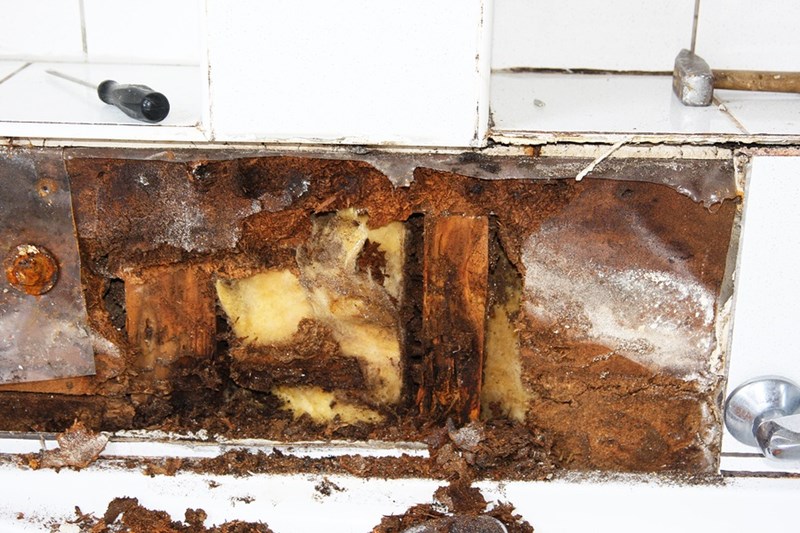The content listed below relating to Common Causes of Water Damage in a Bathroom is unquestionably interesting. Check it out for your own benefit and see what you think about it.

The shower room is extremely susceptible for moist build-up and also possible water damage because of the regular use water in it. This article offers easy assessment strategies to help discovering water damages hazards.
The regular use water in the washroom makes it exceptionally vulnerable for damp build-up and also possible water damages. By inspecting it frequently, you can reduce water related damages.
The following set of assessments is very easy to execute and also should be done once in every 3 months in order to maintain your washroom healthy and to avoid prospective water damages triggered by the tub, the shower, pipeline joints as well as plumbing, sinks, closets, and also the commode
Do not forget executing these examinations and also be extensive while performing them. Keep in mind that these simple inspections can save you a lot of cash by giving early indicators for water damage
Bathtub and Shower
The shower and tub need special interest and maintenance. Check the floor tiles and also change if split. Make certain that there is no missing grout between the ceramic tiles. Check as well as replace cracked caulking at joints where the wall surfaces fulfill the flooring or the tub. Clogged drains and also pipelines issues will stop the tub from drying and might suggest major problems under the tub. Speak with a professional quickly to avoid structural damages. Take note of discolorations or soft locations around the tub walls as they might suggest an internal leakage.
Plumbing
Signs for water damages are hard to detect given that a lot of pipelines are set up inside the wall surfaces.
Pay unique attention to floor covering as well as walls dampness as well as stains as they might suggest an invisible plumbing trouble. Examine moisture degrees in adjoining spaces as well.
Sinks as well as Cabinets
Sinks and cupboards are revealed to wetness and also humidity day-to-day and are commonly ignored. Inspect on a regular basis under the sink and on the counter top over it. Repair any type of drip in the catch as it may recommend drainpipe issues. Check out the sink, slow draining pipelines may suggest an obstructed drain. Change sink seals if they are cracked or loose.
The Bathroom
The commode is a susceptible water junction. Examine the water lines and search for leaks around the commode seat, in the hose pipe, and also under the water tank. If you find any kind of signs of wetness on the flooring around the toilet, look for leaks in the toilet rim and also tank seals.
Be aware that hanging bathroom dish deodorants enhances the possibilities for obstructions.
TIPS TO PREVENT WATER DAMAGE IN THE BATHROOM
The average household uses approximately 80-100 gallons of water per person per day. For a family of 4, that's almost 2,500 gallons of water a week! The largest portion of this consumption comes from bathroom use. Flushing the toilet uses the most water, followed by taking a shower or bath. With that much water running through the home, water damage in the bathroom is bound to happen. Knowing how to spot signs of a water leak is essential to preventing long-term damage. This guide provides you with tips to reduce the impact of water damage on your bathroom.
CAUSES OF BATHROOM WATER DAMAGE
Pipe breaks are the most common cause of water damage we see in our daily jobs. The age of a pipe plays a large role in a pipe break as well as corrosion. Over time, the metal begins to break down, allowing water to escape. Frozen pipe breaks are also a concern in the winter months. Toilet overflows caused by paper products or children flushing inappropriate items. Degraded caulking around the toilet or bathtub can allow water seepage, sometimes behind the fixture, into the subfloor or walls. Condensation forms when the water in a pipe is cooler than the air temperature. Beads of water form on the exterior of the pipes, sometimes so much so that the water begins to drip and pool below. Sink or shower backups created by poor drainage. HOW TO PREVENT WATER DAMAGE IN YOUR BATHROOM
Inspect your toilet supply line for worn or frayed hoses and replace them as needed. Winterize your plumbing to prevent a frozen pipe break. Use vent fans to prevent condensation that can lead to mold growth. Routinely check and replace degraded caulking around your toilet or bathtub. Increase the temperature in your toilet tank and insulate your pipes during the warm summer months to keep condensation from forming. Use child safety locks on the toilets. Flush only toilet paper. "Flushable" wet wipes are actually not good for your plumbing system. Additionally, feminine hygiene products should not be flushed. Prevent water from escaping the tub or shower. Make sure shower curtains are in good condition. Inspect shower doors and replace the seal strip if necessary. Wipe up any water that accumulates on the floor and use bath mats. Water left to sit can cause damage to the tiles and flooring. Refrain from using bath products containing heavy oils to avoid a clogged drain.

As a reader about Looking for Signs of Water Damage in the Bathroom, I was thinking sharing that topic was a smart idea. Sharing is caring. Helping others is fun. Thanks a lot for going through it.
Book Your Appointment